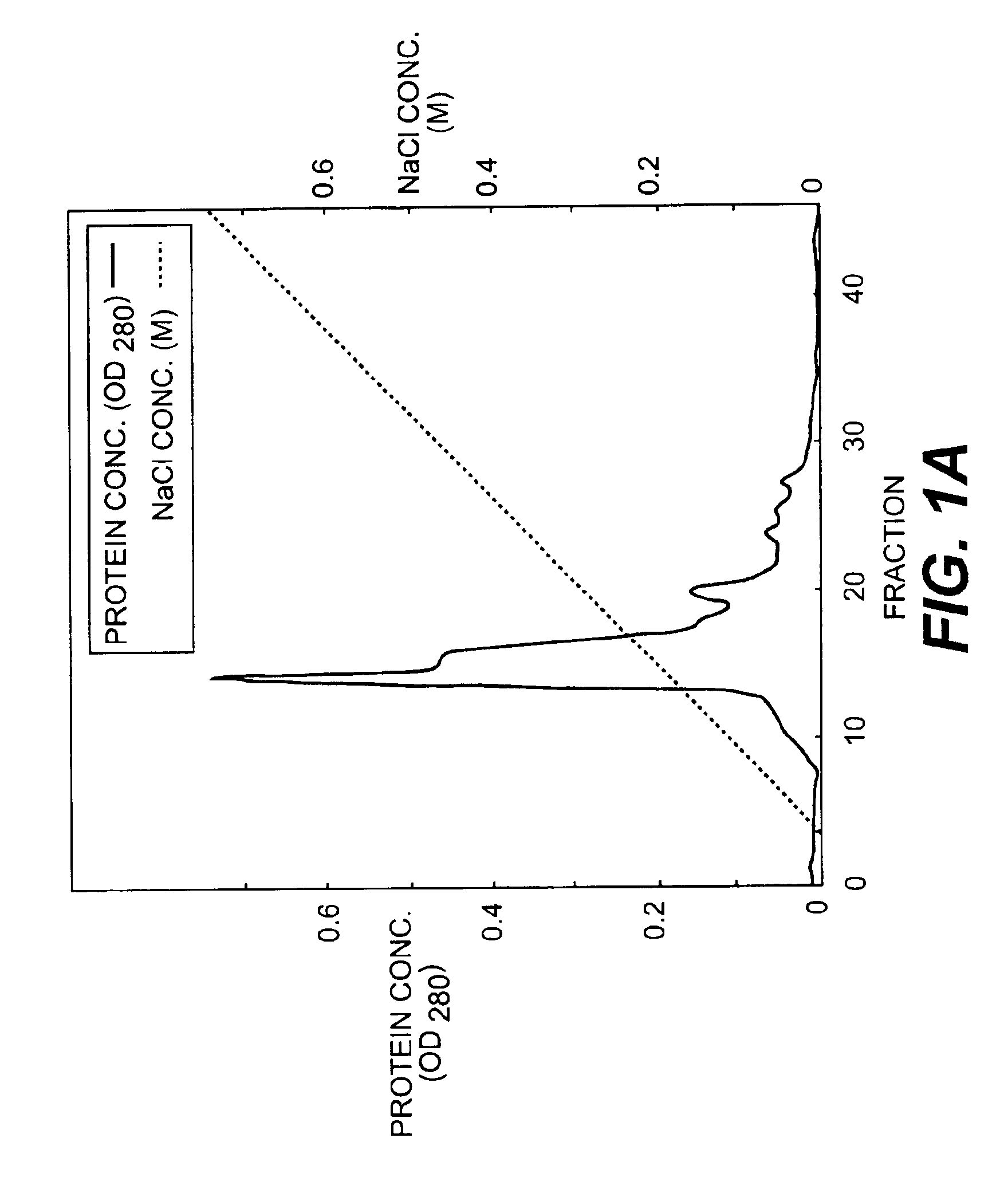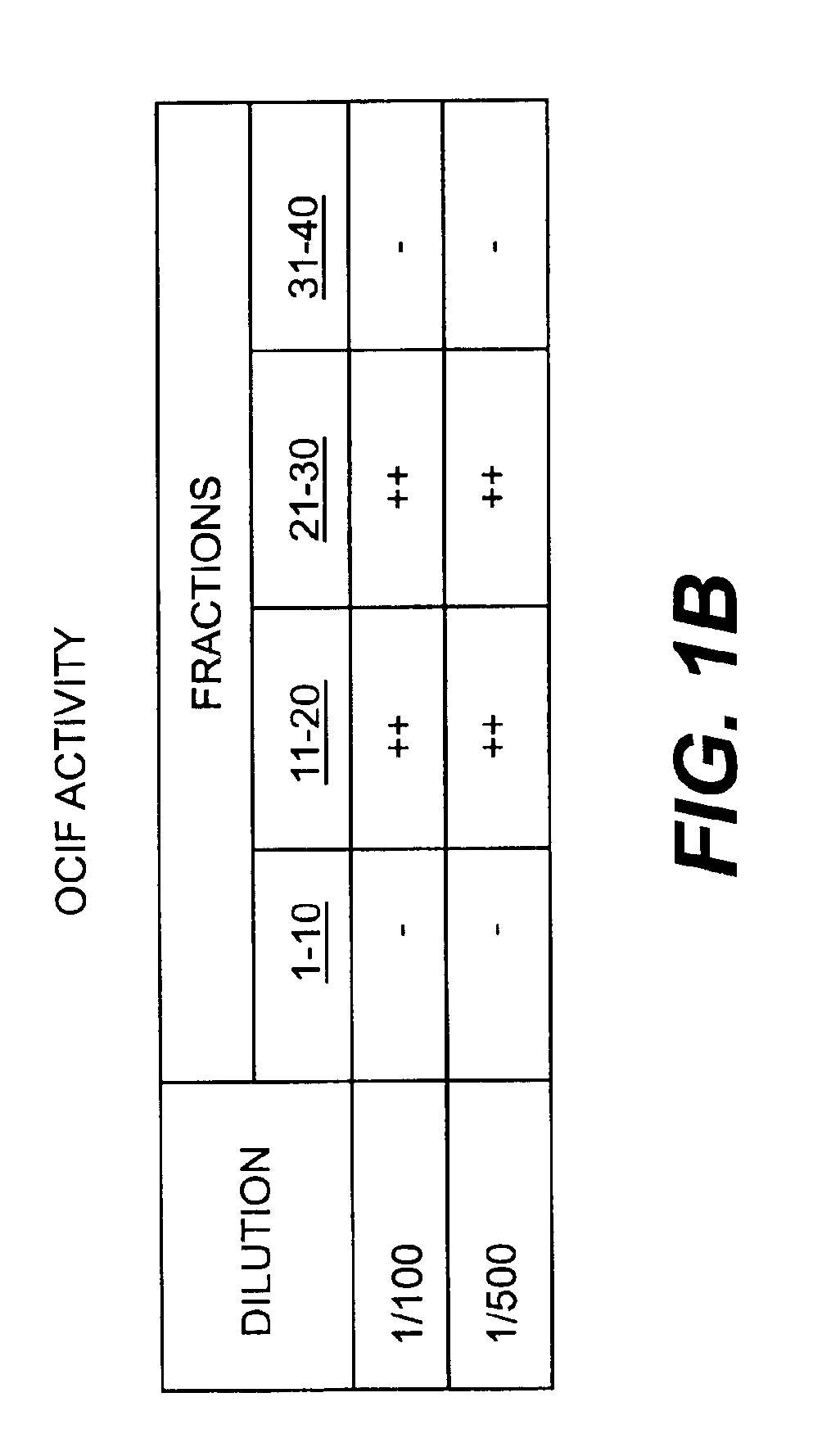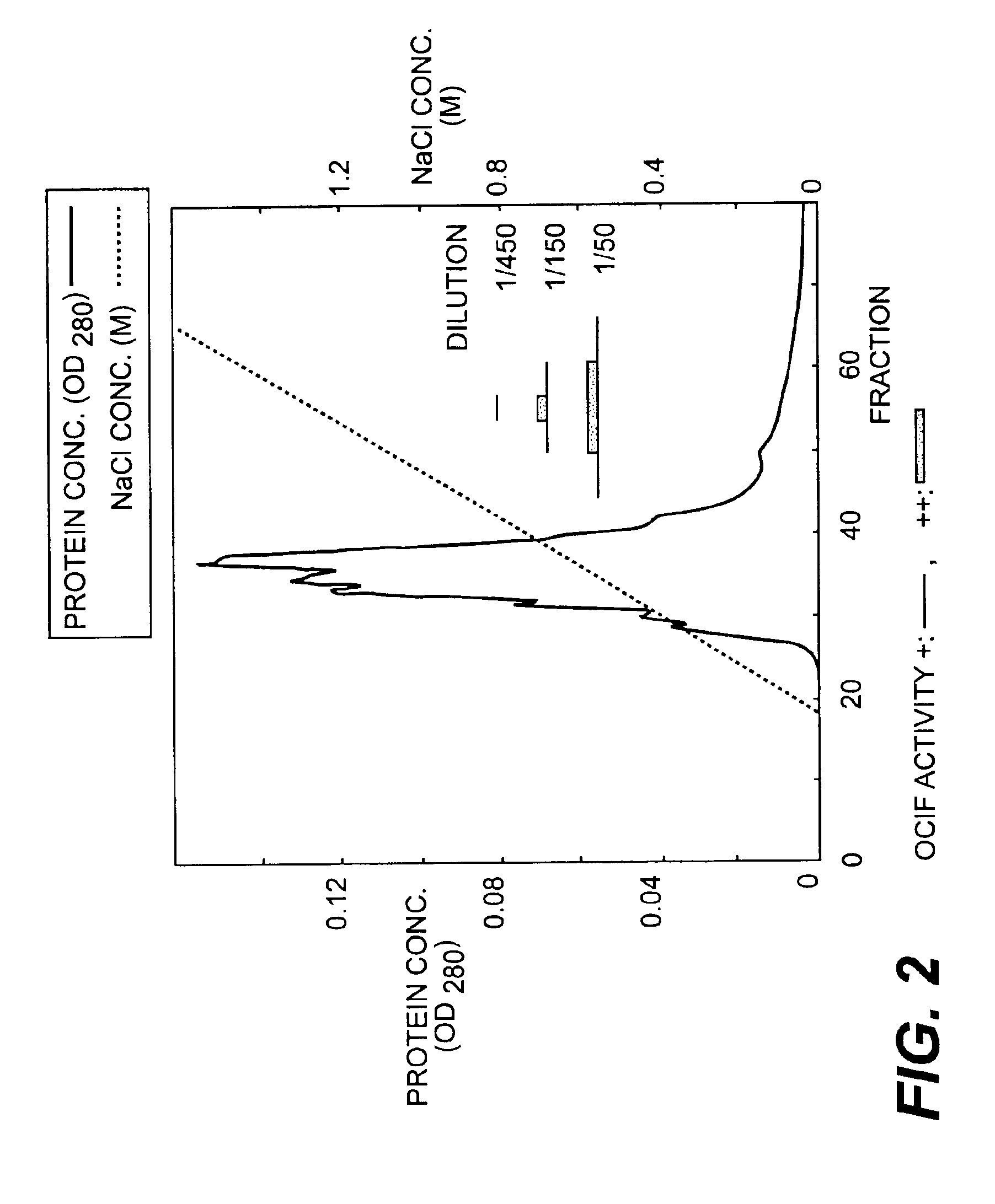Monoclonal antibodies that bind OCIF
a technology of osteoclastogenesis inhibitory factor and monoclonal antibodies, which is applied in the field of new protein, osteoclastogenesis inhibitory factor (ocif), can solve the problems of social issues, fractured bones, and the mechanism of osteoporosis that has not yet been completely elucidated, and achieve the effect of efficiently producing the factor
- Summary
- Abstract
- Description
- Claims
- Application Information
AI Technical Summary
Benefits of technology
Problems solved by technology
Method used
Image
Examples
example 1
[0071]Preparation of a Conditioned Medium of Human Fibroblast IMR-90
[0072]Human fetal lung fibroblast IMR-90 (ATCC-CCL186) cells were cultured on alumina ceramic pieces (80 g) (alumina: 99.5%, manufactured by Toshiba Ceramic K.K.) in DMEM medium (manufactured by Gibco BRL Co.) supplemented with 5% CS and 10 mM HEPES buffer (500 ml / roller bottle) at 37° C. in the presence of 5% CO2 for 7 to 10 days using 60 roller bottles (490 cm2, 110×171 mm, manufactured by Corning Co.) in static culture. The conditioned medium was harvested and a fresh medium was added to the roller bottles. About 30 L of IMR-90 conditioned medium per batch culture was obtained. The conditioned medium was designated as sample 1.
example 2
[0073]Assay Method for Osteoclast Development Inhibitory Activity
[0074]Osteoclast development inhibitory activity was assayed by measuring tartrate-resistant acid phosphatase (TRAP) activity according to the methods of M. Kumegawa et al. (Protein Nucleic Acid Enzyme, vol. 34 p999, 1989) and N. Takahashi et al. (Endocrinology, vol. 122, p1373, 1988) with modifications. Briefly, bone marrow cells obtained from a 17 day-old mouse were suspended in α-MEM™ (manufactured by GIBCO BRL Co.) containing 10% FBS, 2×10−8 M of activated vitamin D3 and a test sample and were inoculated into each well of a 96-well plate at a cell density of 3×105 cells / 0.2 ml / well. The plates were incubated for 7 days at 37° C. in humidified 5% CO2. Cultures were maintained by replacing 0.16 ml of old medium with the same volume of fresh medium on day 3 and day 5 after cultivation began. On day 7, the plates were washed with phosphate buffered saline, and the cells were fixed with ethanol / acetone (1:1) for 1 min. ...
example 3
[0075]Purification of OCIF
[0076]i) Heparin SEPHAROSE™ CL-6B Column Chromatography
[0077]90 L of IMR-90 conditioned medium (sample 1) was filtered using a 0.22μ membrane filter (hydrophilic MILLIDISK™ 2000 Cm2, Millipore Co.), and was divided into three 30 liter portions. Each portion was applied to a heparin SEPHAROSE™ CL-6B column (5×4.1 cm, Pharmacia Co.) equilibrated with 10 mM Tris-HCl containing 0.3 M NaCl, pH 7.5. After washing the column with 10 mM Tris-HCl, pH 7.5 at a flow rate of 500 ml / hr., the heparin SEPHAROSE™ CL-6B adsorbent protein fraction was eluted with 10 mM Tris-HCl, pH 7.5, containing 2 M NaCl. The fraction was designated sample 2.
[0078]ii) HILOAD™-Q / FF Column Chromatography
[0079]The heparin SEPHAROSE™-adsorbent fraction (sample 2) was dialyzed against 10 mM Tris-HCl, pH 7.5, supplemented with CHAPS to a final concentration of 0.1%, incubated at 4° C. overnight and divided into two portions. Each portion was then applied to an anion-exchange column (HILOAD™-Q / FF...
PUM
| Property | Measurement | Unit |
|---|---|---|
| pH | aaaaa | aaaaa |
| volume | aaaaa | aaaaa |
| flow rate | aaaaa | aaaaa |
Abstract
Description
Claims
Application Information
 Login to View More
Login to View More - R&D
- Intellectual Property
- Life Sciences
- Materials
- Tech Scout
- Unparalleled Data Quality
- Higher Quality Content
- 60% Fewer Hallucinations
Browse by: Latest US Patents, China's latest patents, Technical Efficacy Thesaurus, Application Domain, Technology Topic, Popular Technical Reports.
© 2025 PatSnap. All rights reserved.Legal|Privacy policy|Modern Slavery Act Transparency Statement|Sitemap|About US| Contact US: help@patsnap.com



